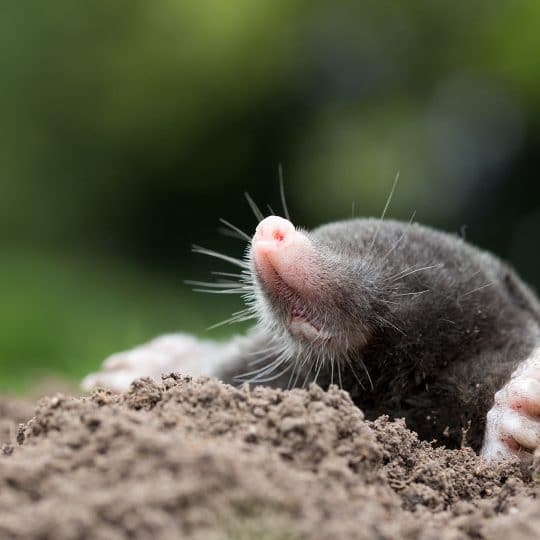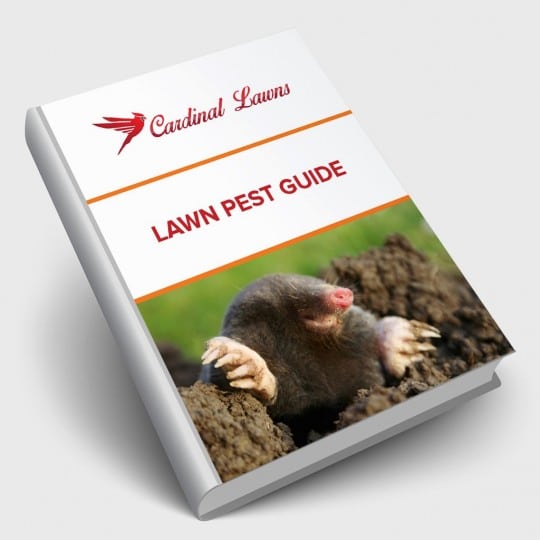Identifying Common Lawn Pests
Plus Prevention and Treatment Options
Posted
May 20, 2021

Now that your lawn is waking up, so are the pests that have the potential to do damage. Learn about identifying common lawn pests and ways of dealing with them.
Identifying Common Lawn Pests
Many factors can keep you from having the lush lawn of your dreams. From weather to weeds, your lawn is always at the mercy of maintenance. While some issues only affect the look of your lawn, others can attract pests that affect both the grass and the gardener. Like any lawn issue, there are ways of preventing and dealing with common lawn pests. It all depends on which one has taken up residence in your area.
There are two main groups of pests: ones that burrow and ones that bite. Read on to learn the difference and how to remedy the problem.
Identifying Burrowing Lawn Pests
Some pests attack lawns from the inside out. Species that burrow not only damage grass roots, but they also tunnel through your yard, affecting any plant in the way. While some are looking for grubs underground, others prefer to dine on grass roots. You’ll start to see tunnel tracks along the soil and patches of dead grass across the yard.
The mounds of soil you see are from moles. They’re tunneling through the turf to get to the worms, grubs, and other insects. Not only are moles a problem, but they could also be a sign that your lawn is overwatered and has a plethora of grubs. To help get rid of moles, you can try traps, castor oil, or specially formulated mole repellent.
Voles also leave a trail behind. You may not see them until it’s too late since snow usually hides the evidence. But once it starts to melt in the spring, you may notice circular patches of dead grass where voles have feasted. Fill in these trails with compost and soil and the grass should grow back. When winter comes around again, treat the area with castor oil to help repel the pests.
Not all who burrow are rodents. Mole crickets tunnel through soil eating other insects, decaying plant matter, grass roots, and shoots. The resulting brown patches are more irregular in shape and have a spongy feel. Insecticides should help with the problem, but you can help prevent them from venturing over by not overwatering your lawn.
Chewing Insects
Lawn pests don’t have to burrow to be a pain. They can bite too. Certain bugs love eating grass blades and plant leaves, leaving only skeletal remains as evidence.
Japanese beetles are easy to pick out from a crowd. They’re also easy to pick off from a plant. When they’re not busy laying eggs in the soil and eating your grass, they’re flying around your garden eating your sweet roses and raspberries.
Where there are beetles, there are grubs. Lawn grubs are the larval form of a few types of beetles. While finding a few in your yard isn’t that bad, the more there are, the larger the dead grass spots, and the greater the chance of attracting other pests who like to eat them. There are many grub treatment products available, both natural and chemical.
Chinch bugs also attack your lawn. But instead of hiding underground, they prefer to lounge in sunny areas, sucking the juices from grass. These tiny bugs have shiny wings and nestle in thatch. So one great way to prevent chinch bugs is to dethatch your lawn.
Testing for Lawn Pests
Some pest problems are more prevalent than others. If you’re not seeing signs of tunnels and want help pinpointing pest location, try these tests.
Drench test. Pour soapy water on a patch of lawn to drive insects up and out. Dissolve two tablespoons of dish detergent in two gallons of water. Pour the solution over an area of the yard you suspect there are pests. Watch for any signs of mole crickets, chinch bugs, or grubs emerging from the soil and grass to escape the suffocating soap.
Float test. Remove the top and bottom of a large can. Push it a few inches into the soil in an area where the problem lawn borders a healthy lawn. Fill the can with water and watch for insects that float towards the surface.
While a few insects may not be a big deal, check with a lawn expert before the numbers multiply and pests take over your yard.
Professional Lawn Maintenance
One of the best ways to prevent common lawn pests is with proper maintenance. Aerate, dethatch, fertilize, mow, and water on a regular schedule to help improve lawn health. For more information on ways to prevent pests and promote a healthy lawn, contact Cardinal Lawns today.

Download Your FREE Lawn Pest Guide
Pests become most prevalent during the heat and humidity of summer. Take some time to learn about the signs of infestations before any damage can be caused to your landscape. This handy guide will teach you how to spot common lawn pests and how to keep them from causing harm to you and your property.